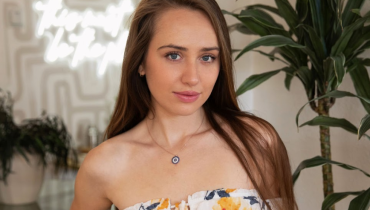When life feels like a constant sprint, stress becomes more than a moment — it becomes a habit. For Amelia Ross, a marketing executive in New York City, stress had turned into an invisible companion that followed her from the office to her home, from her laptop screen to her dreams.
“I was living on caffeine and adrenaline,” she recalls. “And then one night, I realized I hadn’t taken a deep breath in months.” That moment led her to explore a new world of tools that promised balance at her fingertips — mental health apps for stress relief.
From Burnout to Breakthrough: Amelia’s Turning Point
Amelia’s story began like so many others in a post-pandemic world. “Remote work blurred every boundary,” she says. “I was in endless meetings, my notifications never stopped, and my mind felt like a crowded highway.” What started as mild tension soon became physical exhaustion. Her doctor called it “chronic stress,” and suggested therapy or mindfulness. But with a tight schedule, Amelia turned to digital support. “I downloaded my first app — Calm — thinking it would just play ocean sounds. I had no idea it would change the way I handled life.”
Within a week, she was experimenting with breathing exercises, guided meditations, and mood tracking. She began understanding the science of cortisol, heart rate variability, and how her thoughts were shaping her body’s reactions. “I realized that stress wasn’t just mental; it was chemical,” Amelia says. “And that meant I could train my body to respond differently.”
The Rise of Mental Health Apps: A New Frontier in Stress Relief
Over the past decade, mental health apps have transformed how people approach well-being. According to the American Psychological Association, over 50 million Americans now use mental health apps for stress relief and anxiety management. These platforms combine psychology, neuroscience, and design — offering meditation, mood tracking, therapy chats, and CBT-based exercises directly on a smartphone. “The accessibility is what saved me,” Amelia notes. “I could practice mindfulness in a cab, journal at my desk, or calm my mind before bed.”
Apps like Headspace, Calm, BetterHelp, Talkspace, and Breathwrk have become household names. Many integrate wearable data, so users can see stress patterns throughout the day. “When I connected my smartwatch, I could literally see my heart rate spike before presentations,” she laughs. “It was like watching my anxiety in real time — but also realizing I had the tools to change it.”
What Worked — and What Didn’t
Amelia tested over ten different apps before finding her ideal combination. “Calm helped me build daily meditation habits,” she says. “But I needed more interactive feedback, so I added Wysa — an AI-based mental health chatbot.” Through casual conversations, the app helped her process work frustrations and emotional fatigue. “I used to think therapy was only for crisis,” she admits. “Now I see it as maintenance.”
She also learned that not every app delivers what it promises. “Some platforms gamify stress relief to the point of distraction,” she says. “You can’t really measure mental health like steps or calories.” She emphasizes that the best apps encourage awareness, not competition. “If you’re stressing about streaks or scores, you’ve missed the point.”
Combining Digital Tools with Real-Life Balance
Eventually, Amelia developed her own “digital wellness system.” In the mornings, she used a breathing app for five minutes before checking emails. During lunch breaks, she listened to guided relaxation. At night, she journaled gratitude through Reflectly. “It’s not about being calm all the time,” she says. “It’s about having micro-moments that reset your nervous system.”
Experts agree. Dr. Susan Kelly, a psychologist at NYU, says, “Consistency is key. The human brain rewires through repetition, so small, daily stress-relief practices — even app-based ones — can improve long-term resilience.” Amelia experienced this firsthand. After six months, her sleep improved, her heart rate lowered, and her productivity actually increased. “It wasn’t magic,” she laughs. “It was mindfulness meeting technology.”
What Amelia Tells Others About Using Mental Health Apps
Now, Amelia shares her story on panels and social media. Her advice is simple but powerful:
- Start small: You don’t need to meditate for 30 minutes; begin with two minutes a day.
- Track your emotions: Apps like Moodpath help you recognize stress triggers before they explode.
- Prioritize privacy: Choose apps that comply with HIPAA or use end-to-end encryption.
- Mix online and offline care: Use apps as supplements, not substitutes, for human connection.
For Amelia, the best stress relief apps became more than tools — they became teachers. “They helped me notice my breathing, my posture, my thoughts,” she says. “Awareness is the first step to peace.”





























































